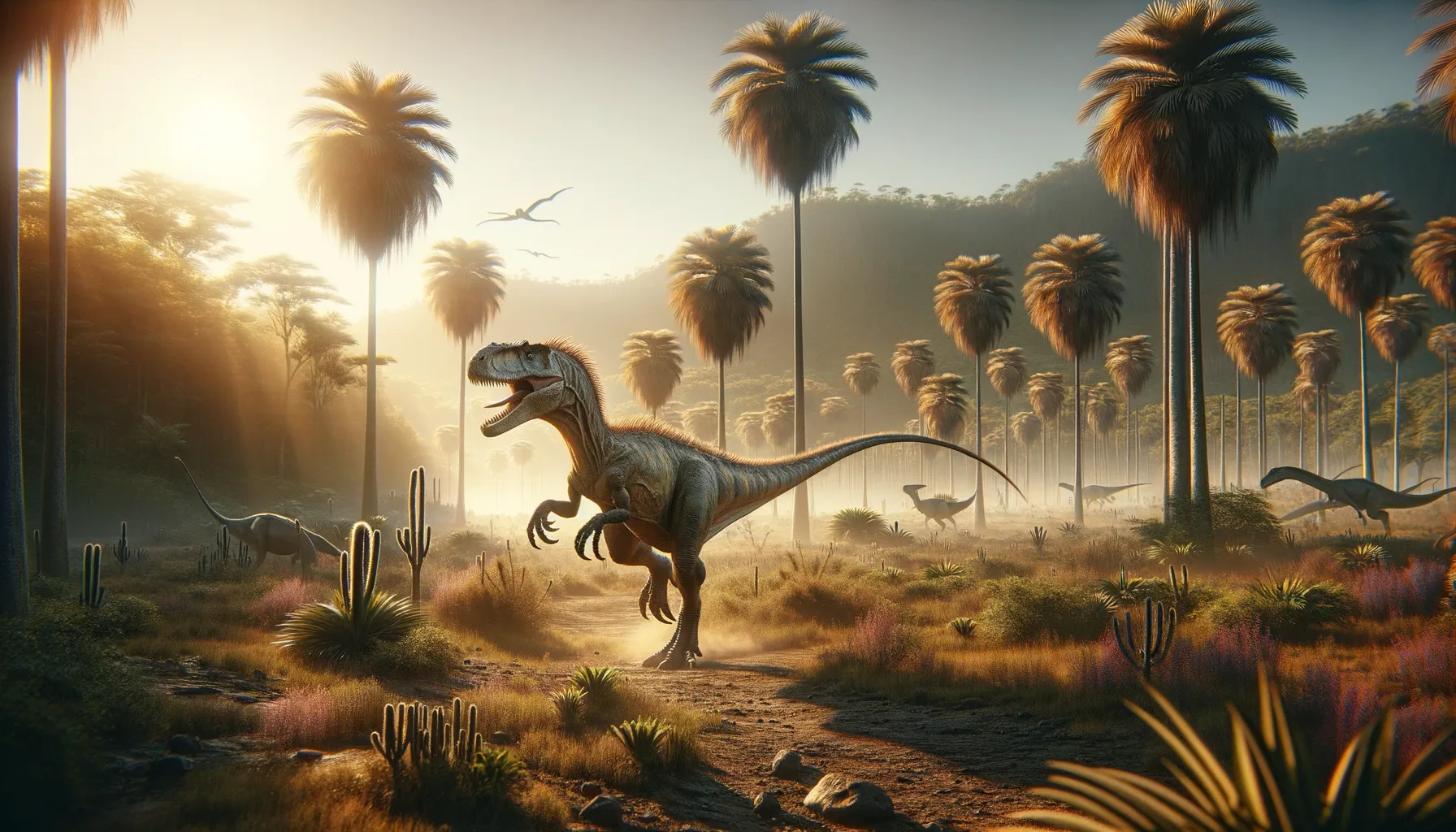
Lucianosaurus
Swift Triassic Trailblazer!
Period
Triassic
Length
Reached about 3 meters in length.
Height
Approximately 1 meter tall at the hip.
Weight
Around 70 kilograms, similar to a large dog.
Lucianosaurus was a small but agile dinosaur that roamed the Triassic landscapes of what is now South America. Equipped with a lightweight build, it could navigate its environment with ease, mainly thriving in open plains. Though relatively small, its physical traits suggest it was an efficient forager and possibly a swift predator of smaller creatures. Its discovery contributed significantly to our understanding of early dinosaur evolution.
Diet
Lucianosaurus was likely an omnivore, feeding on various plants and small animals. Its diet would have included foliage from low shrubs, insects, and possibly small reptiles or mammals.
Hunting
Lucianosaurus probably employed a strategy of quick, opportunistic hunting. It would have relied on its speed to ambush smaller prey and quickly retreat if necessary.
Environmental challenges
Living during the Triassic period, Lucianosaurus faced the challenges of a transitioning world. It had to adapt to changing climates and competition from emerging dinosaur species. Predators would have been a constant threat, requiring this dinosaur to stay vigilant and continuously evolve its survival strategies.
Speed
Lucianosaurus moved swiftly for its size.
Lifespan
Estimated to live around 20 to 30 years.
First discovery
Discovered in the early 1990s in Argentina.
Fun Facts
- Lucianosaurus was a small, early dinosaur that roamed the earth during the Late Triassic period.
- Unlike the enormous dinosaurs that might spring to mind, Lucianosaurus was roughly the size of a modern-day chicken!
- This dinosaur was presumed to be herbivorous, munching on the lush plant life of its time.
- Lucianosaurus had an interesting body structure that suggests it was a fast runner, helping it escape from predators.
- Fossil evidence of Lucianosaurus was first discovered in New Mexico, making it one of the early dinosaur finds from the southwestern United States.
- The name 'Lucianosaurus' is derived from the location where it was found — the Luciano Mesa in New Mexico.
- Despite its small size, Lucianosaurus provides valuable insight into the evolution of early dinosaurs.
Growth and Development
Lucianosaurus likely experienced rapid growth phases early in life to reduce vulnerability to predators. As it matured, it developed stronger limbs and more robust bones, aiding its mobility and survival chances. Social structures might have played a role in its upbringing, as group dynamics could assist in protection and learning survival techniques.
Habitat
Lucianosaurus inhabited semi-arid to arid regions with sparse vegetation. These landscapes were characterized by open plains with occasional water sources, supporting a wide range of plant and small animal life. The environment demanded adaptability to both temperature fluctuations and periodic droughts.
Interaction with other species
Lucianosaurus shared its habitat with both plant-eating dinosaurs and early mammals. Interaction with herbivores might have involved competition for limited plant resources. Predatory interactions were more direct, involving evasion strategies to avoid becoming prey themselves.
Natural lifespan
Lucianosaurus naturally lived around 20 to 30 years.
Reproduction
Reproduction was likely oviparous, with eggs laid in ground nests. Given its size, Lucianosaurus probably produced a modest number of eggs per clutch. Parental care might have included guarding the nest and teaching young survival skills post-hatching.
Social behaviour
Lucianosaurus may have lived in small groups, promoting safety in numbers. Social interactions could have included cooperative foraging and communal nesting. Group dynamics were likely crucial for detecting predators and navigating their expansive environment.
Fossil locations
The main fossil findings of Lucianosaurus are located in Argentina, unveiling significant aspects of its anatomy and lifestyle. These fossils have provided crucial insights into its ecological niche and the diversity of Triassic dinosaurs. Subsequent discoveries in similar regions have strengthened our understanding of its distribution and evolution.
